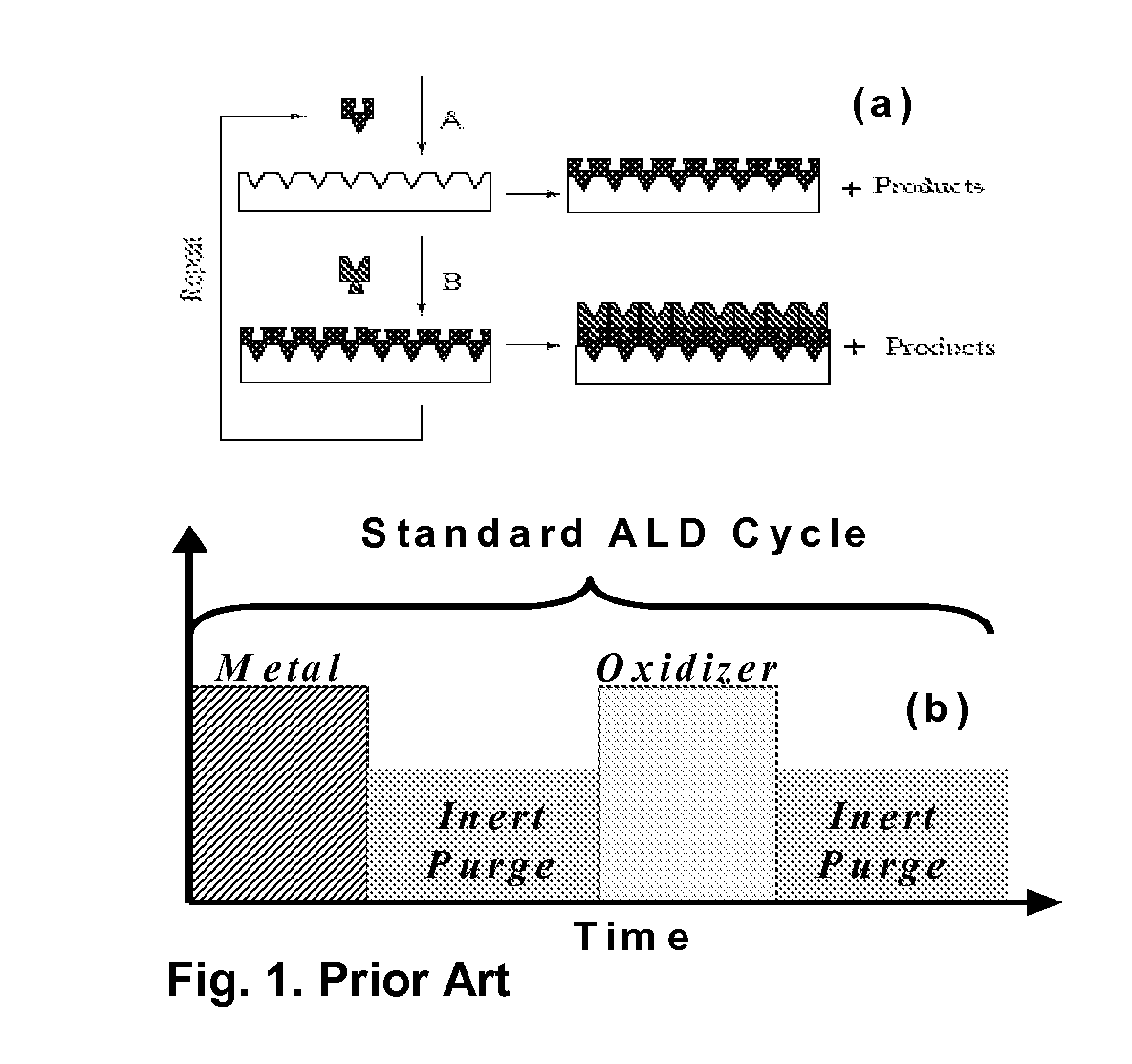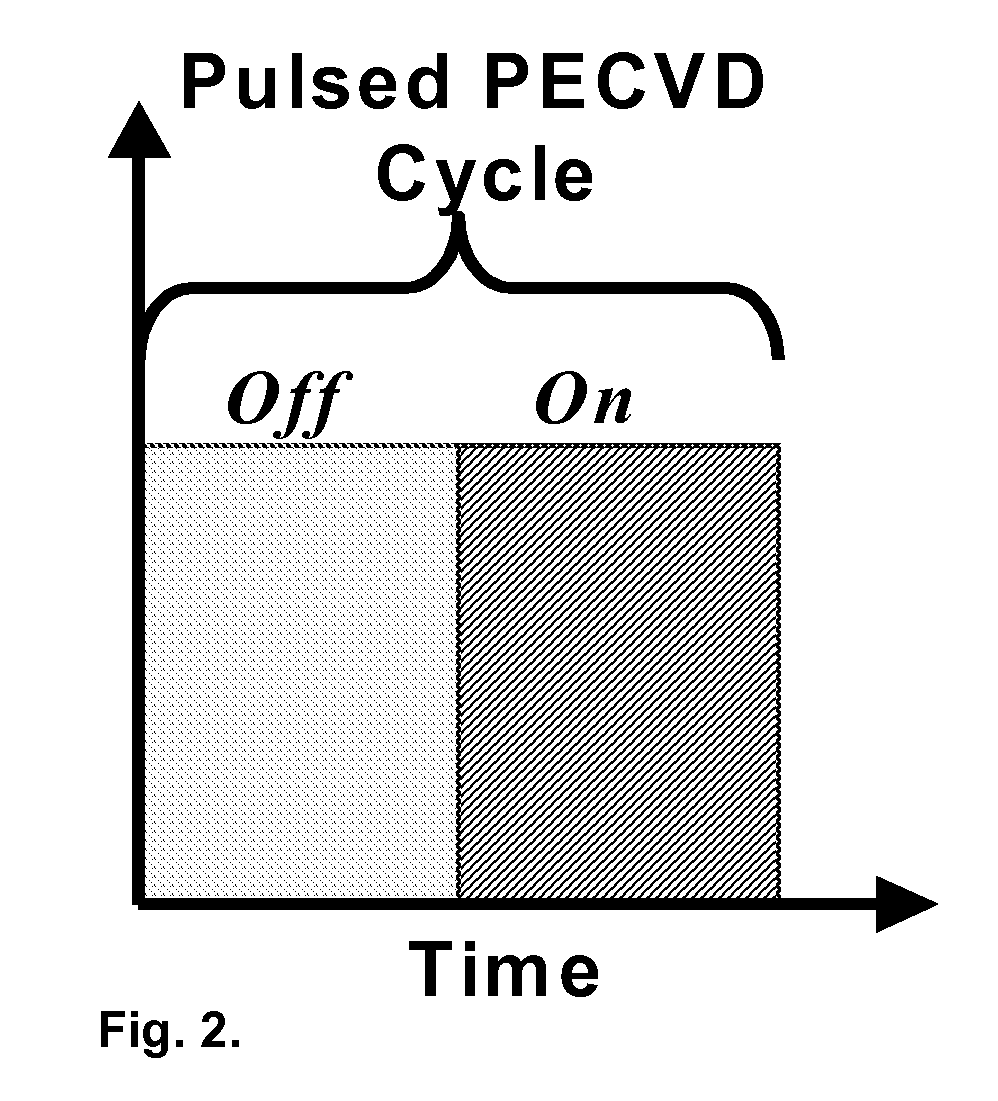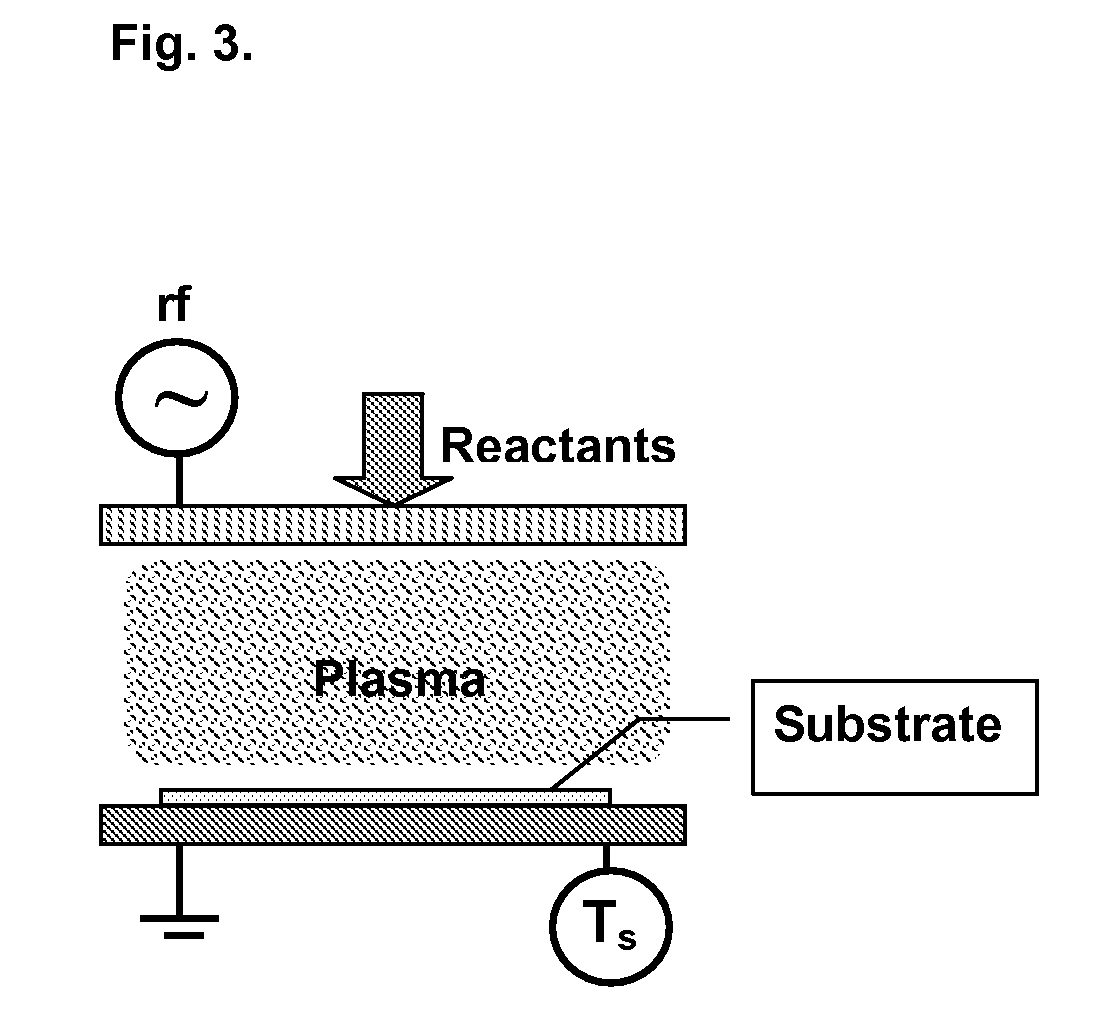Self-Limiting Thin Film Synthesis Achieved by Pulsed Plasma-Enhanced Chemical Vapor Deposition
a technology of chemical vapor deposition and pulsed plasma, which is applied in the field of self-limiting thin film synthesis, can solve the problems of limiting the surface coverage of large precursors, complex mechanical actuation of flow rates, and limiting monolayer deposition, so as to increase the net deposition rate and increase the ald deposition rate and throughput
- Summary
- Abstract
- Description
- Claims
- Application Information
AI Technical Summary
Benefits of technology
Problems solved by technology
Method used
Image
Examples
examples
Deposition Kinetics in the Pulsed PECVD of Tantalum Oxide
[0053]The films were deposited in a custom built, parallel plate, capacitively coupled rf PECVD reactor shown in FIG. 3. Single crystal (100) n-type silicon wafers were used as substrates. The Si wafers were degreased in methanol and chemically etched with dilute HF solution prior to loading into the deposition chamber to remove native SiO2. The precursor employed was penta-ethoxy tantalum (PET, Ta(OC2H5)5), which was housed in a temperature-controlled bubbler and delivered using argon as a carrier gas. Stoichiometric combustion of PET requires 15 oxygen molecules as described below:
Ta(OC2H5)5+15 O2→½Ta2O5+10 CO2+12.5 H2O (1)
[0054]During pulsed PECVD the reactor was operated at very fuel lean conditions (O2:PET>>15). PET was stored in a temperature-controlled bubbler (90-130° C.) and delivered through heated lines using 30 sccm of Ar. PET was mixed with 150 sccm of O2 and delivered continuously through a showerhead, which als...
PUM
| Property | Measurement | Unit |
|---|---|---|
| Time | aaaaa | aaaaa |
| Time | aaaaa | aaaaa |
| Time | aaaaa | aaaaa |
Abstract
Description
Claims
Application Information
 Login to View More
Login to View More - R&D
- Intellectual Property
- Life Sciences
- Materials
- Tech Scout
- Unparalleled Data Quality
- Higher Quality Content
- 60% Fewer Hallucinations
Browse by: Latest US Patents, China's latest patents, Technical Efficacy Thesaurus, Application Domain, Technology Topic, Popular Technical Reports.
© 2025 PatSnap. All rights reserved.Legal|Privacy policy|Modern Slavery Act Transparency Statement|Sitemap|About US| Contact US: help@patsnap.com



